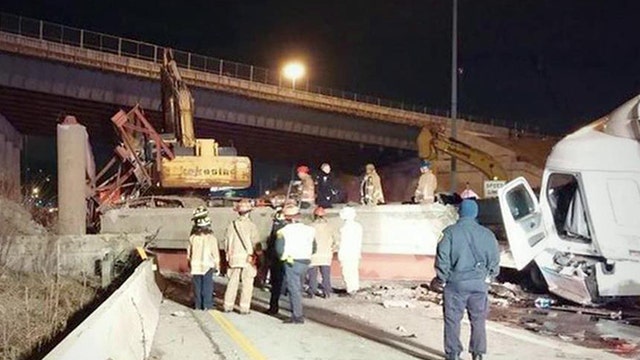

He noted, "30 or 40 years ago, engineers could not anticipate the traffic some of their bridges would be forced to accommodate in the coming decades". They underestimated traffic volumes they also did not take into account that "the amount and weight of trucks today's roadways are significantly higher". David Lau, as part of an article for the Ottawa Citizen, suggests that this estimation of 70 years was inaccurate. The overpass on the Boulevard de la Concorde (Concorde Boulevard) was built in 1970 and was expected to have a life span of 70 years, of which it only lasted 36. The Ministry also sent out messages to journalists and traffic reporters warning of the concrete debris this was confirmed by Josee Seguin, a spokeswoman for the Ministry. The patroller however did demand that an inspection be carried out as soon as possible, but was told "that an inspector would show up only on Monday, two days later". Neither roads were closed as the official concluded that the bridge presented no immediate danger. When the Quebec Ministry of Transport was contacted regarding blocks of concrete falling onto Autoroute 19 from the Concorde Boulevard overpass above, a patroller was sent to do a sight and sound test to gauge whether the road should be closed and to clear away the concrete hazards this was 30 minutes before the collapse.

Carole Hackenbeck, less than a month before the collapse, noticed that there were "unusually large gaps and misaligned spacing in the deck-support structure underneath"."People living near de la Concorde and Highway 19 told The Gazette they had noticed the overpass had begun to crumble in recent months".Immediately before Ī number of people had noticed that the overpass was not in good shape: The autoroute was closed for almost four weeks, "disabling an important north-south link between Montreal and its northern suburbs as well as the Laurentian region". The north-lane half, along the same bridge, did not collapse. The collapsed section crushed two vehicles under it, killing five people and seriously injuring six others who went over the edge while travelling on the overpass. On that Saturday, around 12:30 pm, the centre section of the south lane of an overpass (65-foot or 19.8-metre section of a three-lane overpass) collapsed in Laval, a suburb of Montreal, on Boulevard de la Concorde running over Autoroute 19.

The De la Concorde overpass collapse occurred at a bridge over Quebec Autoroute 19 near Montreal, Quebec, Canada, at midday on September 30, 2006. Highway overpass collapses near Montreal.
OVERPASS COLLAPSE OHIO CRACK
Investigators traced the collapse to the failure of a single link in the chain that had a stress crack that the WVDOT says “would have been difficult for inspectors to have spotted. It’s a mission you’re on to keep this from ever happening again.” If you’re related to the bridge industry in some way in your career, it’s not just a career or a job. “At the West Virginia Division of Highways, every time we train new bridge inspectors, we talk about the Silver Bridge. “I think about the Silver Bridge every day, even now,” Brown said. Tracy Brown, P.E., West Virginia Division of Highways (WVDOH) State Bridge Engineer, says the WVDOT remembers the victims of the tragic collapse every anniversary and keeps the event in mind every day while inspecting bridges across the state in an ongoing effort to prevent another tragedy. The eyebars supported the bridge from above, however, while many bridges with this design had several chains on either side for additional support, the Silver Bridge had only one chain on each side of the span to hold up the bridge decking, the WVDOT says. The collapse became the deadliest bridge disaster in modern history.Īccording to the West Virginia Department of Transportation, the bridge, built in 1928, was constructed using steel eyebars. 15, 1967, the Silver Bridge connecting Point Pleasant, West Virginia with Gallipolis and Kanauga, Ohio, collapsed into the freezing Ohio River during rush hour, killing 46 people and injuring at least eight people. POINT PLEASANT, WV (WOWK) – It has been 55 years since an evening of rush-hour traffic turned into a night of tragedy along the Ohio River.


 0 kommentar(er)
0 kommentar(er)
